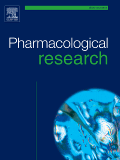
“Apart from having been used and misused for at least four millennia for, among others, recreational and medicinal purposes, the cannabis plant and its most peculiar chemical components, the plant cannabinoids (phytocannabinoids), have the merit to have led humanity to discover one of the most intriguing and pleiotropic endogenous signaling systems, the endocannabinoid system (ECS).
This review article aims to describe and critically discuss, in the most comprehensive possible manner, the multifaceted aspects of 1) the pharmacology and potential impact on mammalian physiology of all major phytocannabinoids, and not only of the most famous one Δ9-tetrahydrocannabinol, and 2) the adaptive pro-homeostatic physiological, or maladaptive pathological, roles of the ECS in mammalian cells, tissues, and organs.
In doing so, we have respected the chronological order of the milestones of the millennial route from medicinal/recreational cannabis to the ECS and beyond, as it is now clear that some of the early steps in this long path, which were originally neglected, are becoming important again. The emerging picture is rather complex, but still supports the belief that more important discoveries on human physiology, and new therapies, might come in the future from new knowledge in this field.”
http://www.ncbi.nlm.nih.gov/pubmed/27630175









